Lateral (Kocher) approach to the pediatric proximal radius
1. General considerations
The lateral (Kocher) approach can be used to access the radial head and the tip of the coronoid.
In pediatrics the most common use of this approach is open reduction of radial head/neck fractures.
2. Skin incision
Either a posterior skin incision with a lateral skin flap or a lateral skin incision can be used.
For a lateral skin incision, place the elbow at 90° and palpate the lateral condyle, which is easier in thin patients.
Make a gently curved skin incision directly over the middle of the lateral condyle, initially 6-8 cm, extending proximally or distally if needed.
Note: The posterior interosseous nerve is located within the supinator muscle and must be protected during this approach. This crosses the posterior radius, from anteriorly, three patient finger breadths distal to the radial head.
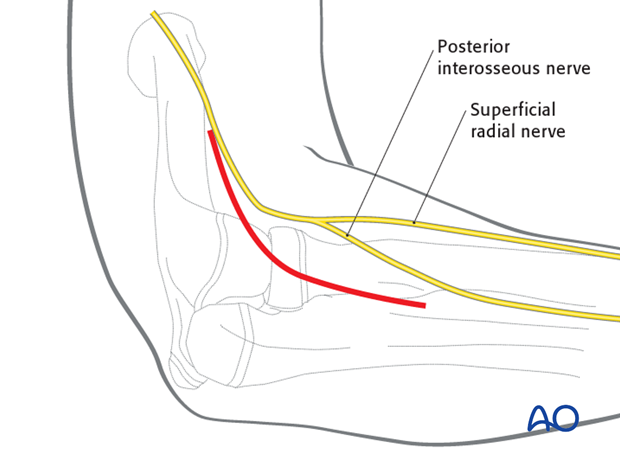
3. Superficial surgical dissection
Incise the subcutaneous tissue in line with the incision and raise flaps to expose the fascia over the muscles.
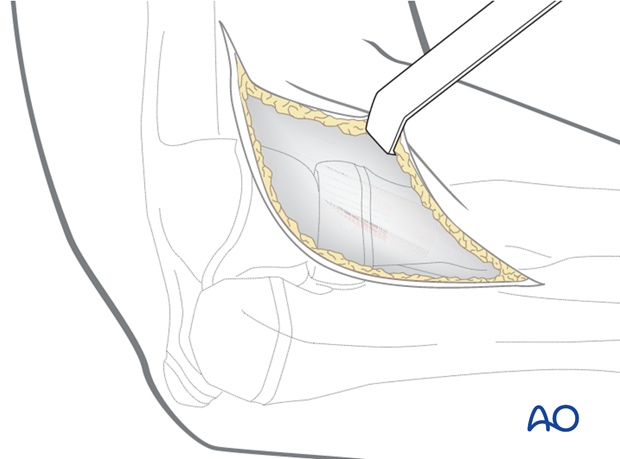
4. Identifying intervals
It can be difficult to identify precise intervals proximally because of confluence of fibers in the common extensor origin.
It is easier to identify the intervals distally but keep in mind that distal dissection needs to be limited to protect the posterior interosseous nerve.
Pronation of the forearm will move the nerve further from the plane of dissection.
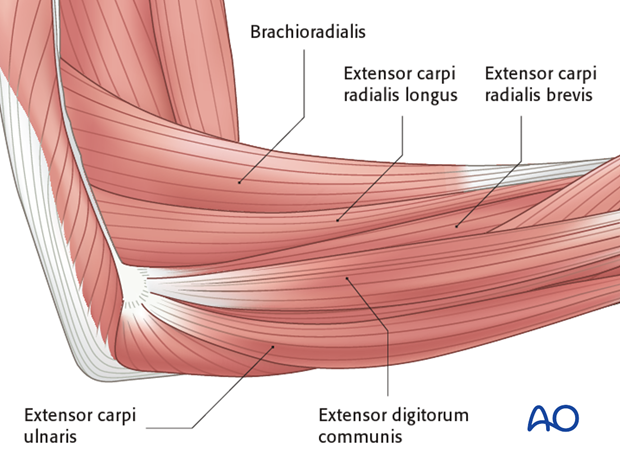
5. The Kocher interval
The Kocher interval is between the extensor carpi ulnaris and the anconeus.
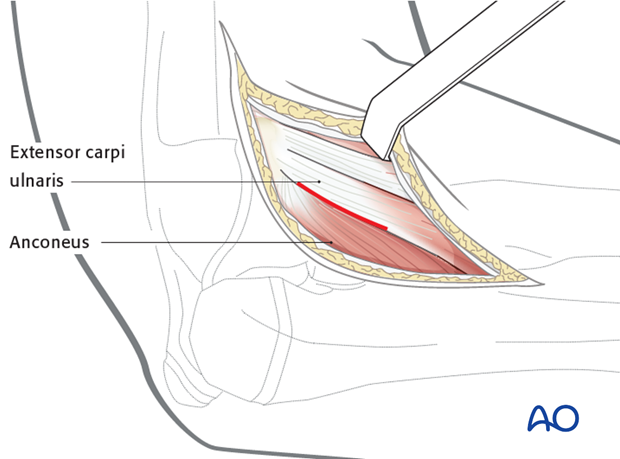
6. Avoiding damage to nerves
- Fully pronate the forearm to protect the posterior interosseous nerve by moving it away from the operative field.
- Avoid incising the capsule too far anteriorly as the radial nerve lies over the front of the anterolateral portion of the elbow capsule.
- Avoid dissection distal to the annular ligament or strenuous retraction because the posterior interosseous nerve, lying within the supinator muscle, is at risk.
- Do not place retractors around the radial neck.
7. Deep surgical dissection
Divide the annular ligament, if intact, in line with the muscle interval.

8. Release of proximal capsule and muscle
Release the origin of brachioradialis and associated capsule from the lateral supracondylar ridge to improve visualization of the capitellum and radial head.
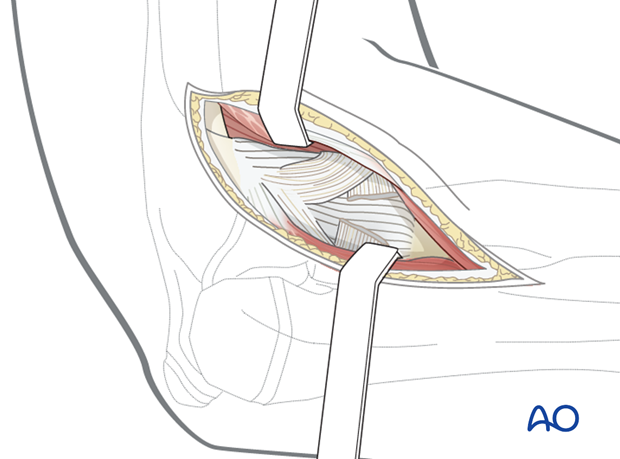
9. Wound closure
Close the capsule with resorbable sutures (3/0).
Reattach the muscles and fascia with resorbable sutures (2/0 or 3/0).
Close skin and subcutaneous tissue with fine resorbable sutures (this avoids distress to the child when removing nonabsorbable sutures).













